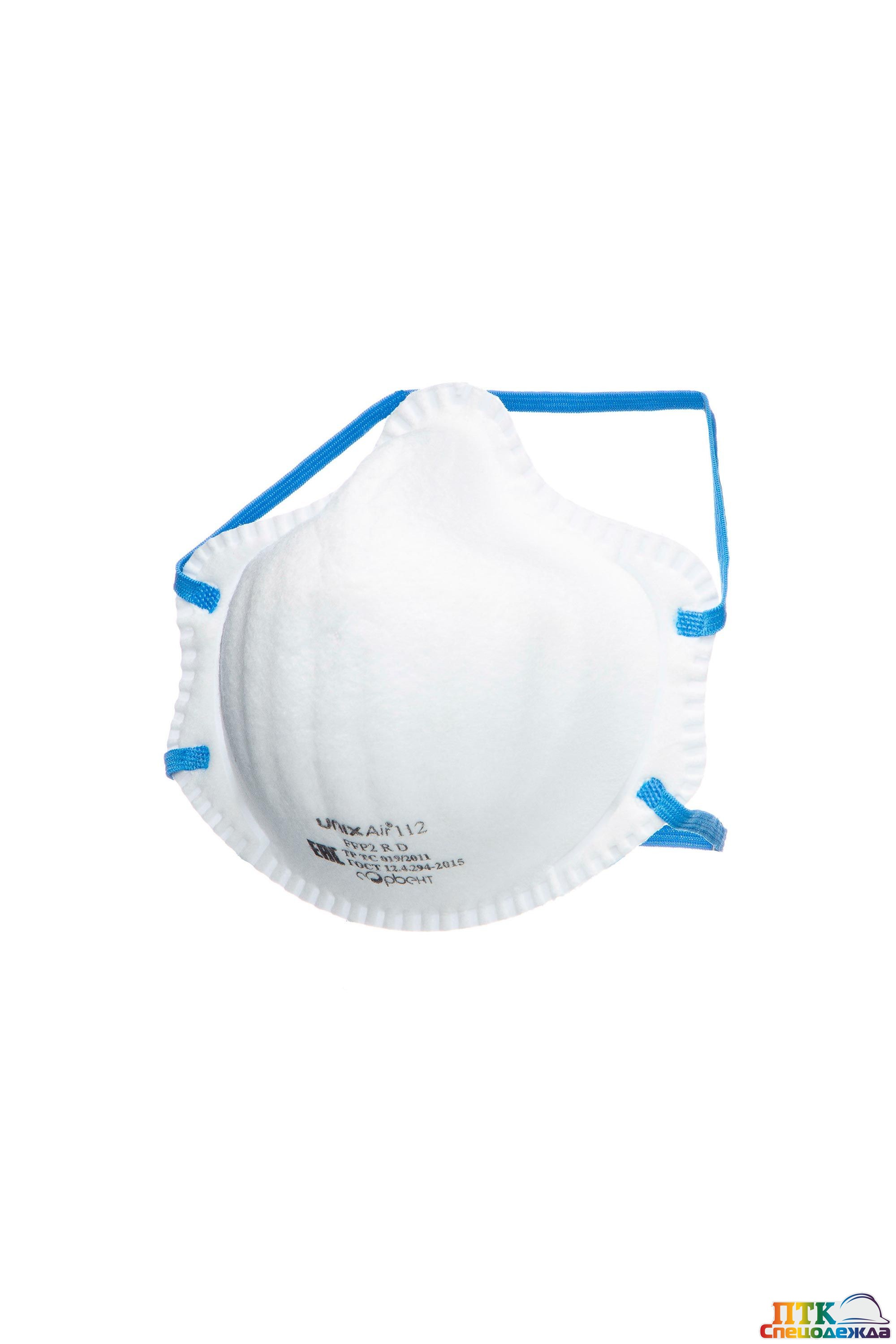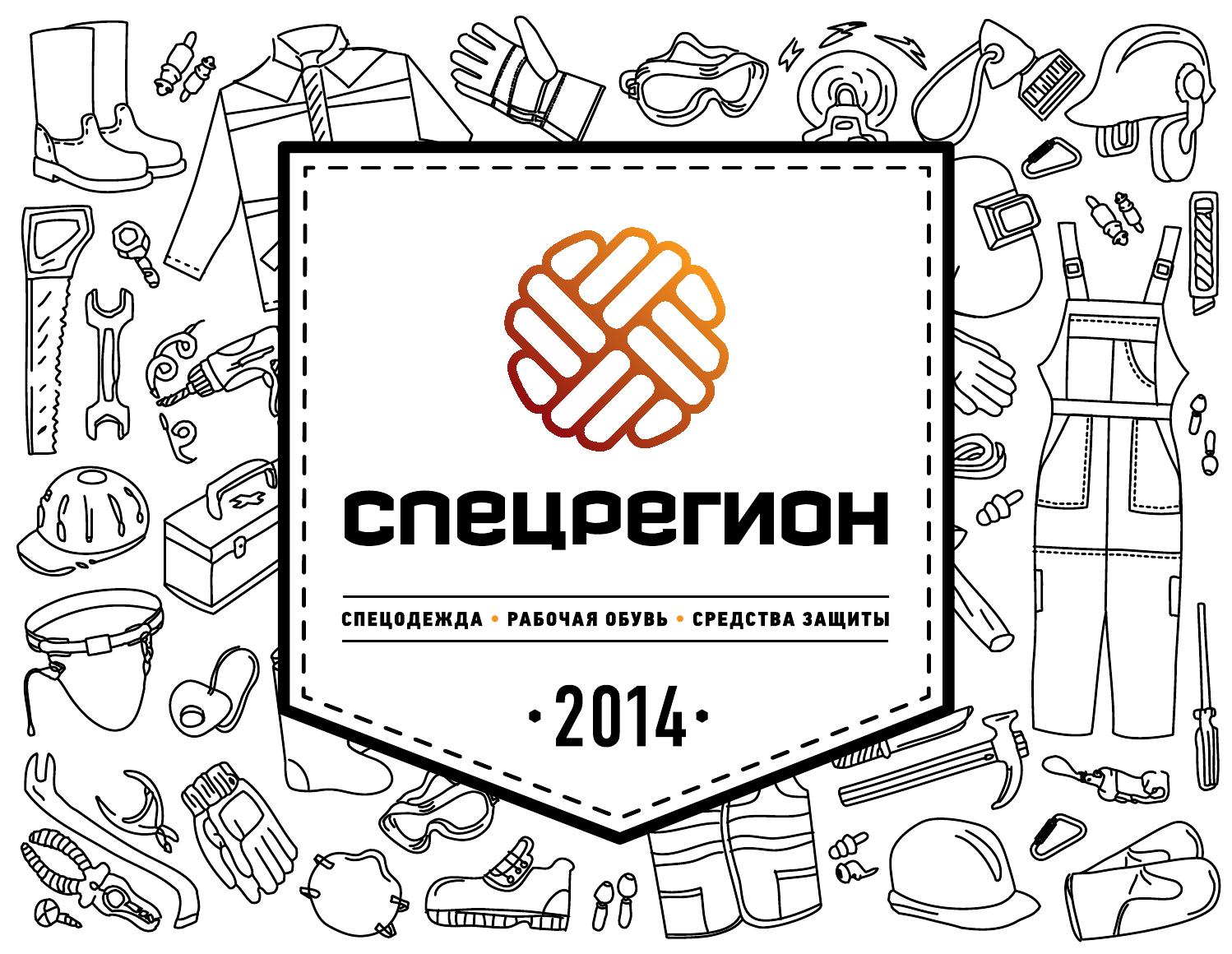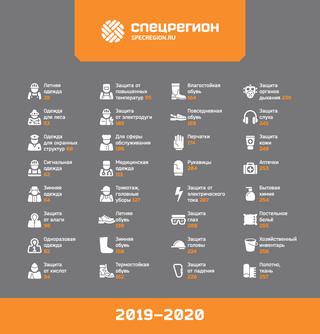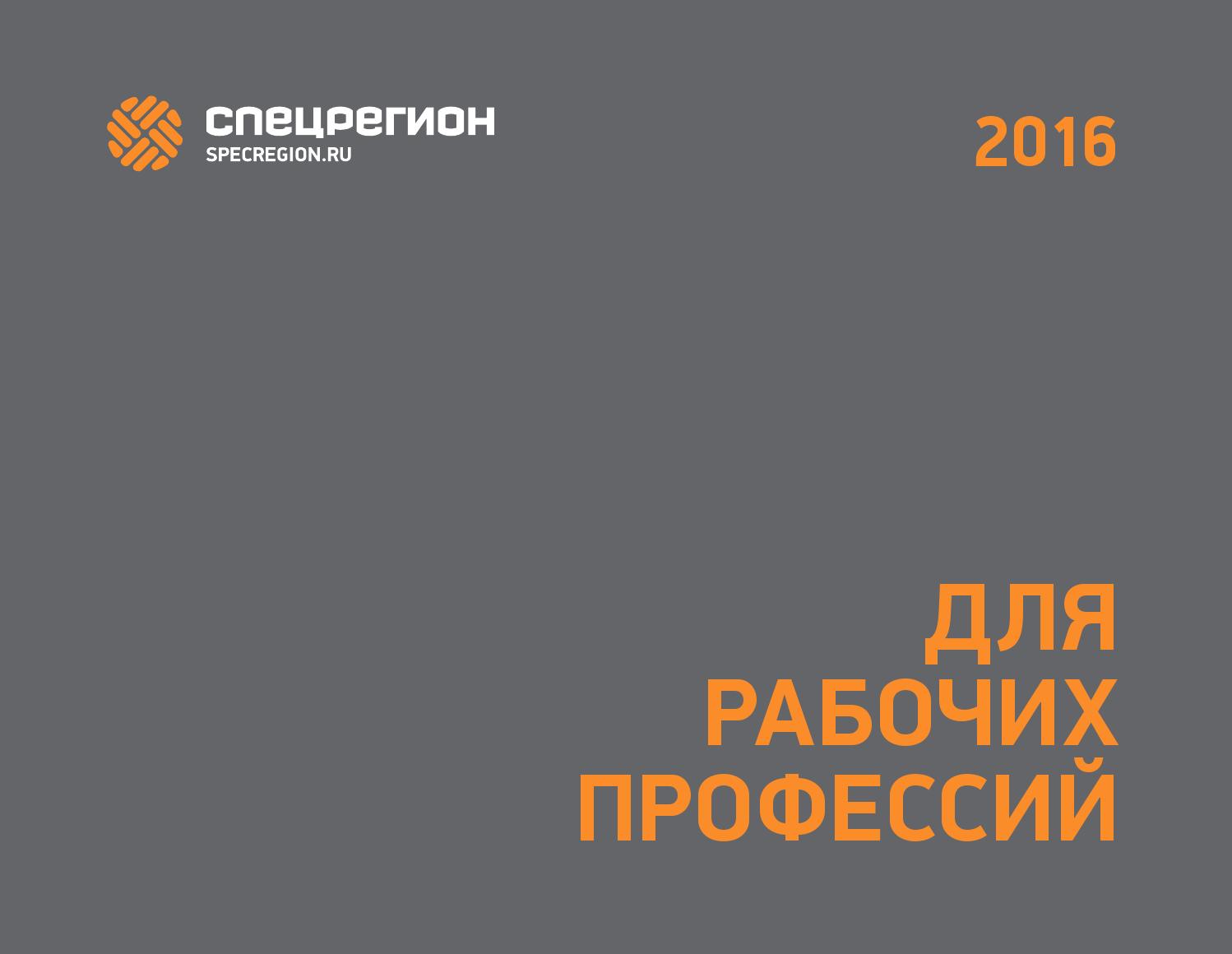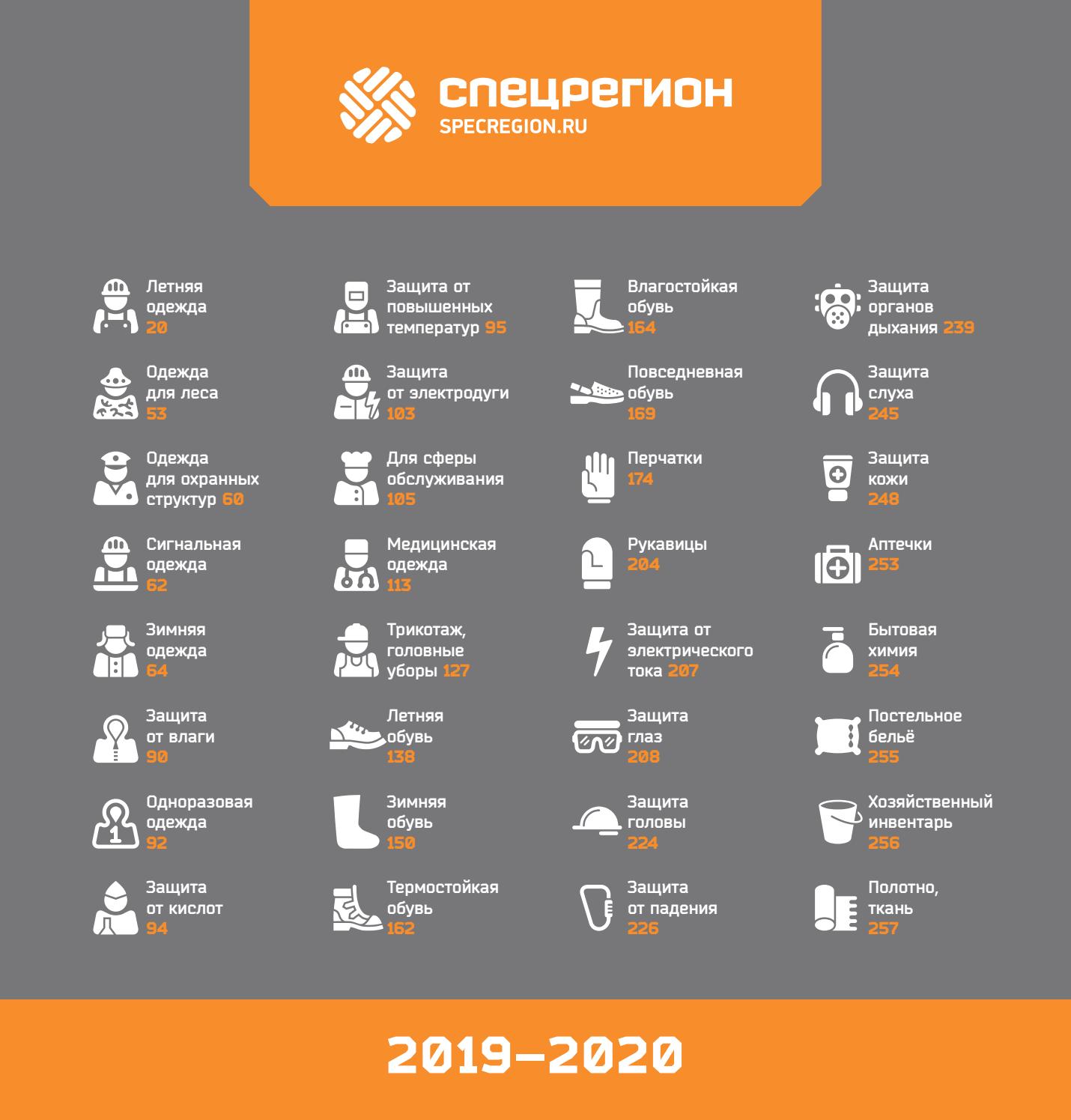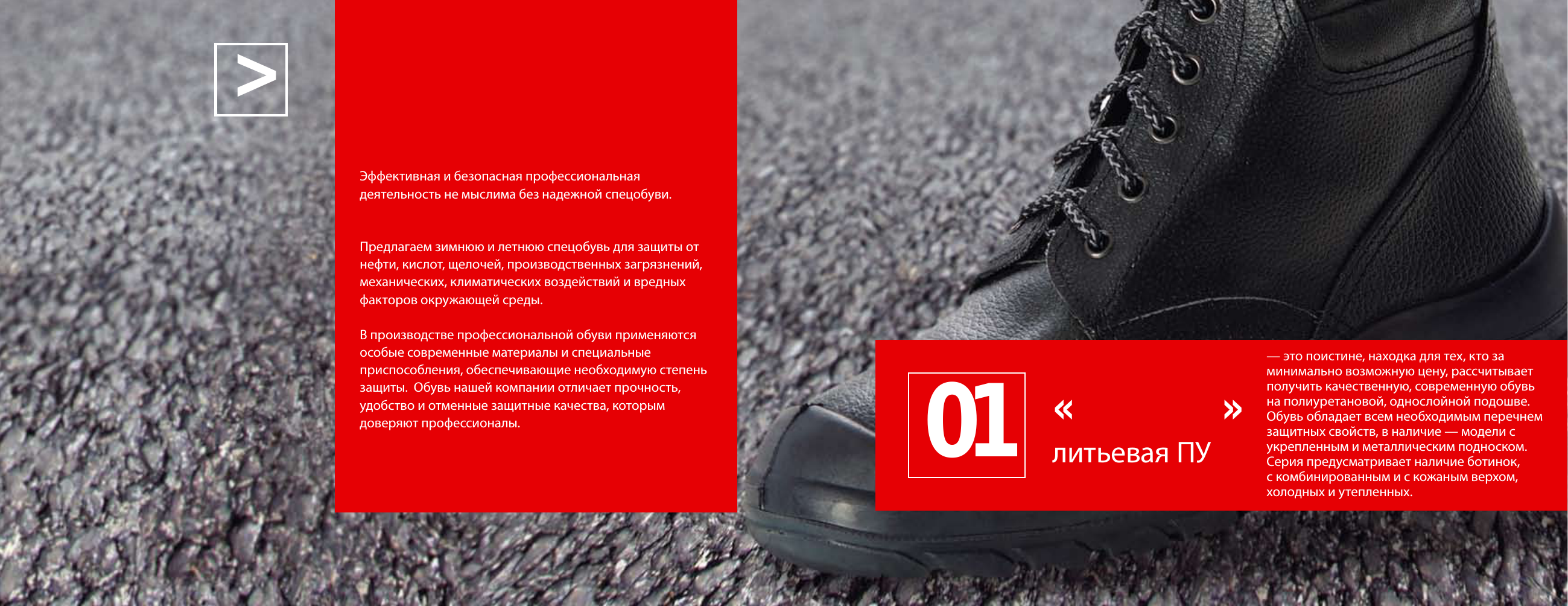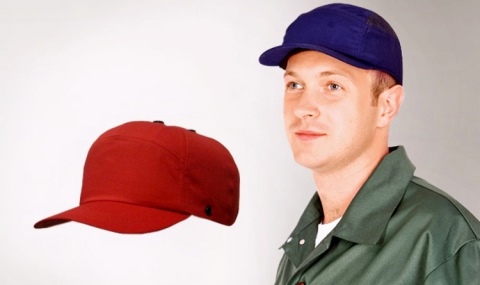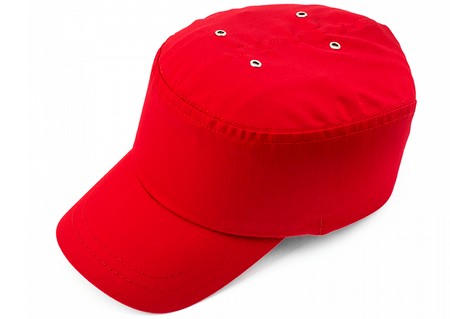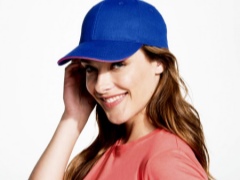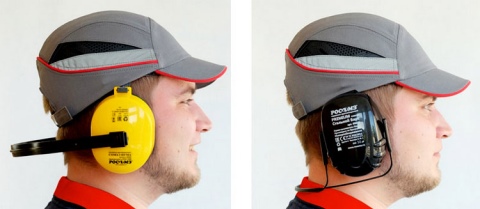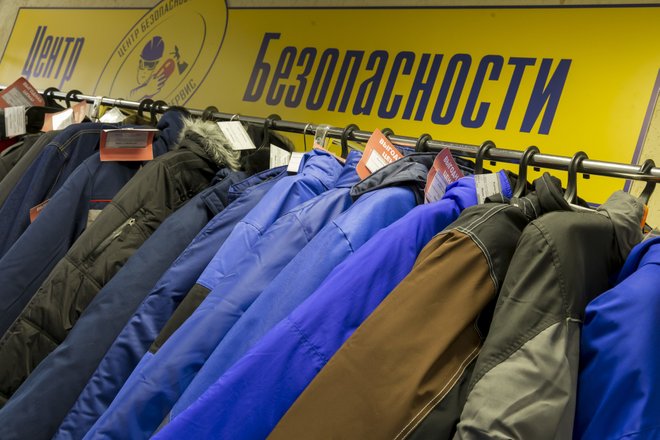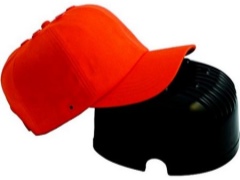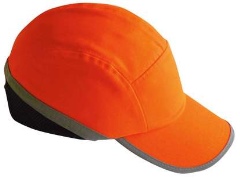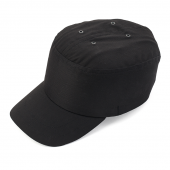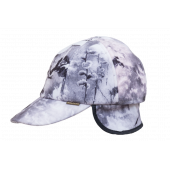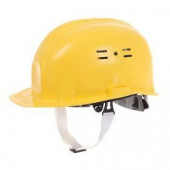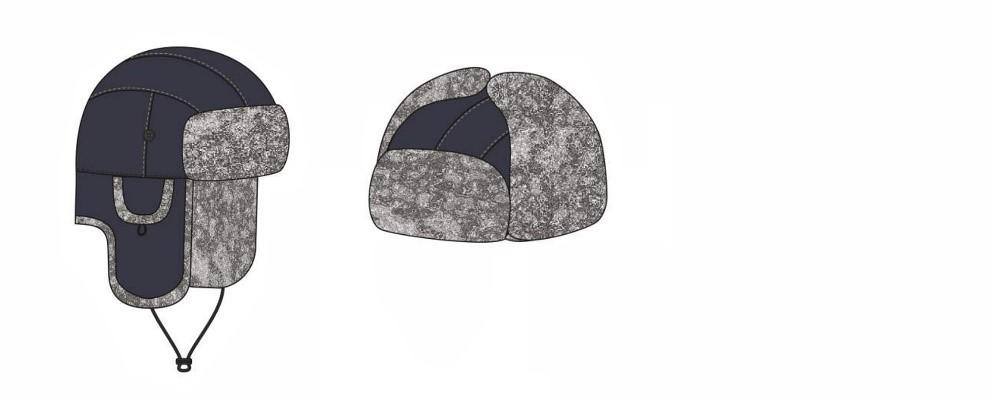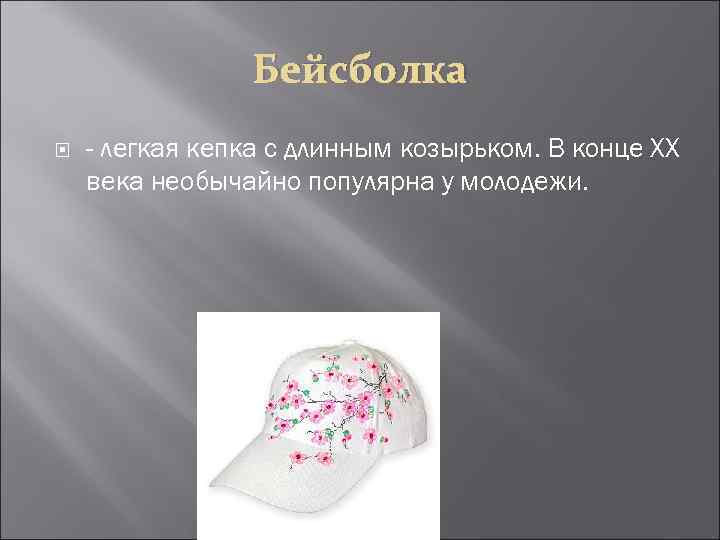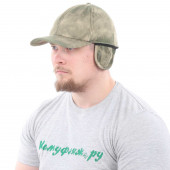Choice of personal protective equipment for the head
The choice of a helmet should be based on the following:
- snug fit and comfort: the inner frame should be well fitted and padded; the size of the headband should be adjusted so that the helmet stays on the head when tilted, but does not sit on the head so tightly that marks remain on the forehead;
compliance with the intended purpose (for example, for thermal or electrical protection);
Compliance with a recognized safety standard (see section on national / international regulations and international standards);
the expiration date must be indicated on the helmet (plastic is destroyed by exposure to sunlight).
- helmets must be worn in accordance with the manufacturer's instructions;
helmets cannot be worn with a visor on the back of the head, unless this is expressly permitted by the manufacturer;
do not carry the helmet near the car window (due to the destructive effect of UV rays on plastic);
the chin strap should not be pulled over the brim or visor;
do not drill holes, do not modify the structure of the outer shell of the helmet. Changes can lead to a decrease in the degree of protection provided by the helmet;
do not paint the outer plastic shell of the helmet: exposure to paint solvents can make the plastic brittle and more prone to cracking. The paint can also hide cracks that can expand. Metal helmets are allowed to be painted;
Perform a compression test to check for cracks and ductility;
in non-conductive helmets, do not use winter linings containing metal or electrically conductive materials.
do not use metal tags on non-conductive helmets.
all personnel must be provided with helmets with brims - no caps or sun hats should be worn under the helmet.
CONSTRUCTION CONSTRUCTION HELMETS
TECHNICAL CONDITIONS
Official edition
IPK PUBLISHING STANDARDS Moscow
INTERSTATE STANDARD
Occupational safety standards system CONSTRUCTION CONSTRUCTION HELMETS
GOST
12.4.087-84
Technical conditions
Occupational safety standards system. Building. Building helmets. Specifications
MKC 13.340.20
Instead of
GOST 12.4.087-80
By the decree of the State Committee of the USSR for Construction Affairs dated May 10, 1984 No. 73, the date of introduction was established 01.01.85
This standard applies to plastic helmets designed to protect the head of workers from mechanical damage, water and electric current during construction, construction and repair work.
1. BASIC PARAMETERS AND DIMENSIONS
1.1. Helmets should be made in two sizes with steps for adjusting the length of the carrier tape no more than 10 mm:
I — from 54 to 58 cm;
II - from 58 to 62 cm.
At the request of the consumer, it is allowed to make large helmets from 62 to 64 cm.
1.2. The main dimensions of the helmets must correspond to those indicated in the drawing and in table. 1.
Schematic representation of the construction of a helmet
1 2 3
a - body height; b - the depth of the internal equipment; в - the width of the visor; r - the width of the fields; d - annular gap; e - vertical safety gap; 1 - case; 2 - stiffener; 3 - shock absorber; 4 - suspension; 5 - carrier
ribbon
Official edition
Reprinting prohibited
Reissue. December 2003
Standards Publishing House, 1984 IPC Standards Publishing House, 2004
Table 1 mm
|
Size name |
Standard size for helmets |
|
|
I |
II |
|
|
Body height a, no more |
160 |
165 |
|
Depth of internal equipment b, not less |
80 |
85 |
|
Width of fields g, no more |
15 |
|
|
Visor width in, not more |
60 |
|
|
Vertical safety clearance e |
25 to 50 |
|
|
The annular gap between the helmet body and |
||
|
carrier tape d |
5 to 20 |
Note. In the manufacture of helmets from 62 to 64 cm in size, the main dimensions must correspond to size II.
1.3. Differentiated indicators of helmets by quality category are shown in table. 2.
table 2
|
Quality indicator name |
Quality index value for helmets |
|
|
first quality category |
the highest quality category |
|
|
Helmet weight (without capes and liners), t, no more, for size: I |
400 |
390 |
|
II |
430 |
410 |
|
Maximum transmitted force, at |
||
|
rated impact energy 50 J, kN, no more |
5 |
4,0-4,5 |
|
Availability of other types of fastening devices |
||
|
personal protective equipment |
— |
Must have |
|
Material Intensity Ratio |
0,81 |
0,80 |
1.4. Helmets, depending on the operating conditions, have the following types of completeness:
set A - for those working in the premises: helmet;
set B - for those working outdoors in a hot climatic zone: helmet and cap;
set B - for those working outdoors in a temperate climatic zone: helmet, drape and padded comforter;
set G - for those working outdoors in a cold climatic zone: helmet, drape, woolen comforter;
set D - for those working in a special climatic zone: helmet, drape, comforter on wadding, woolen comforter.
Each helmet must be accompanied by instructions for installation and operation, indicating the service life.
An example of a symbol for a helmet set A, size I, white:
A-16
The same, set D, size II, red:
G-Pk
How to choose the right one?
When choosing a cap, you need to focus on some important parameters. So, a construction baseball cap must comply with the GOST 12.4.255-2013 numbers. If the headdress is made without taking into account the required parameters, then you should refuse to purchase it. It is pointless to choose such a cap, since it will not be able to provide the proper level of protection.


In no case should you buy a protective cap if it has any defects. For example, unscrupulous sellers may offer a discounted product, but making a choice in favor of it is dangerous to life and health.
It is also better to refuse to buy products that have the following negative features:
- sharp edges;
- bulges and all kinds of protrusions;
- bloating;
- cracks and scuffs.
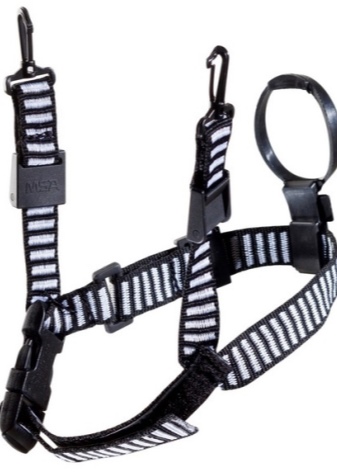
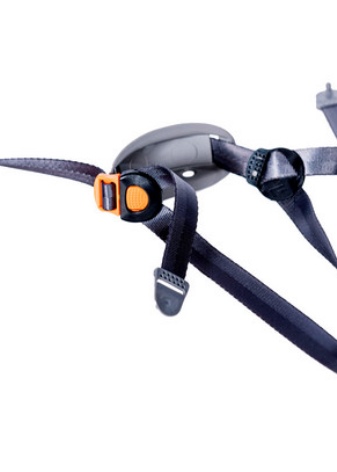
Because of them, in the process of using the accessory, you can easily get injured. In addition, you need to make sure that all fixing elements are secure and that spontaneous detachment is excluded.
According to the statistics, the belts are the most vulnerable part of the helmet, so it is imperative to check them before buying.
Model norms for issuance by profession
According to Russian legislation, there are 195 professions for which workwear is issued. Not all specialties require winter clothing. The standard norms for the issuance of overalls are regulated by articles of the Labor Code of the Russian Federation No. 209, No. 211, No. 212, No. 221, No. 229/2, No. 330/5 and by order of the Ministry of Labor No. 997n dated 09.12.2014. Also, the norms for the issuance of overalls are spelled out in the SIZ-2018 (personal protective equipment), regulatory legal acts are in force. Information about insulated clothing is available in the decree of the Ministry of Labor of the Russian Federation No. 70 of 12/31/1997.
The service life of workwear depends on the climatic zone, and varies from 18 to 48 months. At the end of the wearing period, the clothes are replaced with a new one, and the old one is rented out. When the temperature is set to +10 degrees with a subsequent decrease, all employees must be provided with overalls. Old overalls can be written off at the end of their service life. If it coincides with the end of the cold season, then new clothes can be issued in the fall. The issuance of overalls must be carried out in accordance with the norms of the law and in compliance with the temperature regime.
Among the industries in which the provision of winter workwear is mandatory:
- Agriculture and forestry, fishing.
- Construction.
- Transport and communication.
- Trade.
- Education and Science.
- Public administration and security.
Workers in pollution-related industries should also receive other personal protective equipment, including:
- Metallurgy and mechanical engineering.
- Manufacturing industry.
- Extraction and processing of minerals.
- Chemical production.
Working conditions play an important role in providing workers with special clothing. Pilots and military, police and security personnel receive winter overalls. SIZ-2018 contains 195 professions, for which overalls are required, and for each separately all the necessary things are prescribed.
Depending on the work performed in the winter, employees may be issued:
- Warm suit to protect against general pollution.
- Warm boots.
- Warm helmet liner.
- A cap.
- Insulated linen.
- Frost resistant gloves.
Low shoes may be issued instead of boots, and some minor replacements may also be made, which must be agreed by the employer with the trade union or other body representing the interests of workers.
Rules for the issuance of winter overalls by profession.
Terms of use of winter clothing
The established norms for the free issuance of overalls take into account the conditions of the climatic zone, this affects the timing of wearing PPE. The quality of things depends not only on the material of production, but also on the conditions of use and storage. It is necessary to observe the air humidity in the warehouse, heat it and provide ventilation.
Order of the Ministry of Finance of Russia No. 135n dated 26.12.2002 regulates the accounting of uniforms. When the period of application is less than 12 months, it is allowed to write off directly when issuing personal protective equipment. In other cases, a straight-line write-off method is used, and overalls are treated as fixed assets.
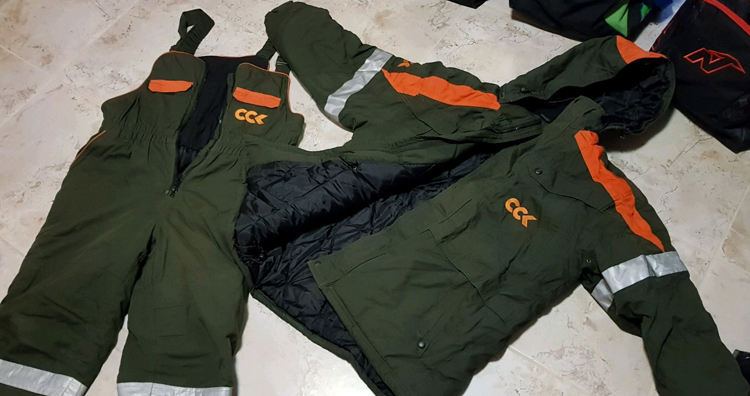
Set of clothes
The service life of special clothing for workers mainly depends on the area of use, but there are differences by industry as well. As a basis for insulated robe kits, you can take the "Standard norms for the free issuance of special clothing, footwear and other PPE", including the terms of the Decree of the Ministry of Labor No. 70 dated 31.12.1997.
| Terms of operation by belts | 1 | 2 | 3 | 4 | 5 |
| Jacket and trousers with insulated lining | 3 | 2,5 | 2 | 1,5 | 1,5 |
| Jacket and trousers lavsan-viscose with insulated lining | 3 | 2,5 | 2 | 1,5 | 1,5 |
| Short fur coat | — | — | — | — | 4 |
Shoes
When issuing footwear and other PPE, it is necessary to use legal regulations that correspond to the activities of the enterprise. According to the typical terms of use of shoes, felt boots, boots and low shoes are issued:
- in the first region - for 4 years;
- in the second - for 3 years;
- in the third - for 2.5 years;
- at 4 and special for 2 years.
When working in high mountain areas at an altitude of up to 2 thousand meters above sea level, the wearing period is reduced to 2 years.
Hats and mittens
For the possibility of carrying out work activities in the cold season, hats and gloves are put. For these personal protective equipment, there are not only periods of wear, but also the regulations provide for materials that are allowed for production in a certain climate of use. As a rule, gloves and hats protect from frost, but they can also have additional functions, for example, fire protection.
In a special region, it is provided for the issuance of caps with earflaps for a period of 36 months. In the rest, a warm woolen hat is also required with a period of use of 36 months. For such specialties as a reinforcement worker, concrete worker, accumulator worker, driller, etc., gloves are issued in the amount of three pairs for one season. They are made with a protective coating, frost-resistant, with woolen liners.
Warmed comforters are issued for helmets with a period of use for 2 years.
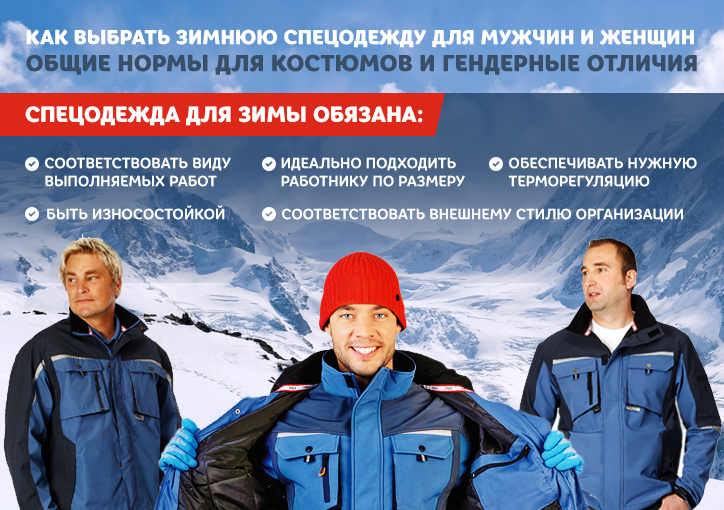
Description
A hard hat is a headgear designed to protect the head from blows.Unlike a helmet, the accessory is less durable and provides less protection.

The helmet should be worn over the head in cases where a helmet is not required, but it is recommended to create an appropriate level of safety for the head. The accessory protects against impact in case of falling objects of light weight.
The protective baseball cap consists of two main elements.
- Top fabric layer. He makes the cap look like a regular cap. For the manufacture of the cap, a wear-resistant material with a water-repellent impregnation is used.
- The second layer is an internal protective lining made of durable plastic. It is she who protects the head from possible blows.


The helmet is used in various fields - when working in warehouses and in car services, in carpentry work, in workshops in production, as well as in everyday life (for example, when working in basements or attic rooms).
The helmet has a standard set of characteristics. These include:
- light weight (about 240 g);
- easy adjustment in width (the headgear fits different head sizes - from 52 to 66);
- suitable for work in hard-to-reach places, as it is securely fixed on the head of a person;
- made of wear-resistant and shock-resistant materials;
- provides an average level of protection;
- available in 2 versions - standard and insulated;
- has a protective visor.

In addition, it should be said about the versatility of this headgear, since it can be worn when performing almost any work. But this does not mean protection from a dropped object. Rather, the helmet is designed to protect against unintentional impacts on some surface.
Varieties
First of all, helmets are divided into 2 main categories - summer and winter.
The first option is classic. To work at low temperatures, the upper part, consisting of fabric, is replaced with another material (knitted or windproof), sometimes supplemented with insulation.
Some winter models are designed to work in conditions of strong wind, precipitation and low air temperatures. This option is most often complemented by side "ears". A kind of warm hat with earflaps protects both from wind and frost. Sometimes the headgear is equipped with a reflective strip. This is necessary for work in the dark.
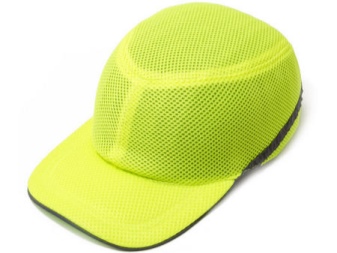
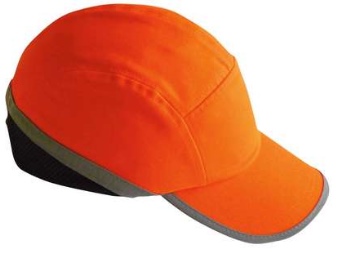
With the help of an additional clip (not available on all models), the cap can be attached to a suit or any other clothing.
Other hats
As a headgear to protect the welder, not only a comforter can be used, but also other forms of devices, which we will consider below.
A cap
In addition to various types and models of comforters, the welder can use as a headgear - special hats that protect only the top of the head. Performers are offered winter, summer and split hats.
Winter
The welder's winter hats are designed for use in the range from subzero to subzero temperatures.
Heat-resistant welder's hat FavoriT CRYSTALIN
Manufacturer - ROSOMZ (Russia).
Material Composition: 60% Protex, 40% Cotton.
The hat reliably protects against sparks and splashes of hot metal.
The material has good breathability and hygroscopicity.
Two-layer design protects the head from dust and other contaminants.
The hat is securely fixed, does not slide out during work, which guarantees comfort and convenience.
Important! Some models of winter hats for welders have pom-poms and folds. These elements will interfere with the contractor during the work, the gates will slide over the eyes .. The hat must exactly follow the contours of the head, which will ensure the comfort and convenience of the welder
For example, welding helmets have caps (pictured) that allow you to adjust the seating depth and width.
The hat must follow the contours of the head exactly to ensure the welder's comfort and convenience.For example, welding helmets have caps (pictured) that allow you to adjust the seating depth and width.
Two models of caps that differ in not too suitable design:
Inappropriate hat for welder - the pumpon will interfere with the head of the mask, the gates will fit over the eyes
Unsuitable hat for the welder - too loose the top of the cap will interfere with the head of the mask, because of it the cap will fit over the eyes
Summer
Summer hats are designed for use in the warm season.
Welding hat L. Brador 580B
- Manufacturer - Skydda (Sweden).
- Trade mark - L. Brador.
- Material - 100% cotton.
- The elastic on the back of the headgear allows you to adjust the size.
Spilkovaya
The most common models of split hats are presented below.
Split welder's hat
- Manufacturer - SPETS-TRADE (St. Petersburg).
- The headgear reliably protects against direct sparks and splashes of hot metal.
Welding hat with ears
The welder's split hat with ears is designed to protect the head from welding spatter and direct sparks.
Country of origin - Russia.
Balaclava
Balaklava is a headgear that covers the head, neck and part of the shoulders of the welder from sparks, scales and splashes, allowing work in low ambient temperatures.
ESAB welder's balaclava
- The ESAB knitted balaclava is worn under a welding helmet, made of special fire-resistant woolen yarn, has minimal thermal conductivity.
- The headgear protects the welder's head and neck from the effects of low ambient temperatures (down to -50 ° C), as well as sparks and splashes into the hair.
- Doesn't cover your face.
- Model - MATEXPRO 39MA.
- Country of origin - Spain.
- Single-layer balaclava made of heat and fire-resistant KERMEL Interlock V50 knitted fabric, which does not support combustion and does not melt.
- Material composition: 50% KERMEL; 49% Lenzing FR; 1% Belltron.
- Density - 220 g / sq.m.
How to improve the performance of workwear
For the industrial operation of winter overalls, it is important not only to comply with standard standards, but also to properly dry-clean and store them. An important factor in the high quality characteristics of PPE is the material of manufacture
In addition, it is necessary to control the execution of seams, thanks to new technologies, they can withstand a rather large load, which ensures the possibility of longer use in work.
To better preserve special uniforms and improve performance, the most modern technologies, the latest fabrics and developments in the light industry are used
Much attention is paid not only to jackets, trousers and shoes, but also the quality of production of shields for welding masks, earmuffs for hearing protection is improving. Nanotechnologies are being introduced into the production of workwear, thanks to them the fabric will be reliably protected from stains, bacteria and microbes
Despite the improvement in operational characteristics, the weight of the products is reduced, and it is comfortable to work in the suit.
While manufacturers are introducing their developments, it is worth thinking about preserving the existing workwear in production. To increase the service life, it is necessary to regularly clean the dirt, ideally after each shift.
If the robe is kept dirty for a long time, then, in addition to the fact that it loses its protective characteristics, it can also become an object of emergency. When contaminated with paints and varnishes, "slow burning" occurs, which can lead to spontaneous combustion.
It is important for an enterprise to know the technology of dry cleaning of the fabric from which the overalls are sewn. This will help to save on its maintenance, it will be easier to organize proper care of PPE.
Assigning the care of the garment to employees will not be able to maintain or improve the performance of the products.
Any organization must provide workers with winter uniforms, according to regulatory documents, ensuring its safety is the responsibility of the enterprise.With the formation of internal orders imposing the duty of cleaning and caring for the uniform on the employee, it will not be possible to maintain its characteristics for a long time at the proper level.

